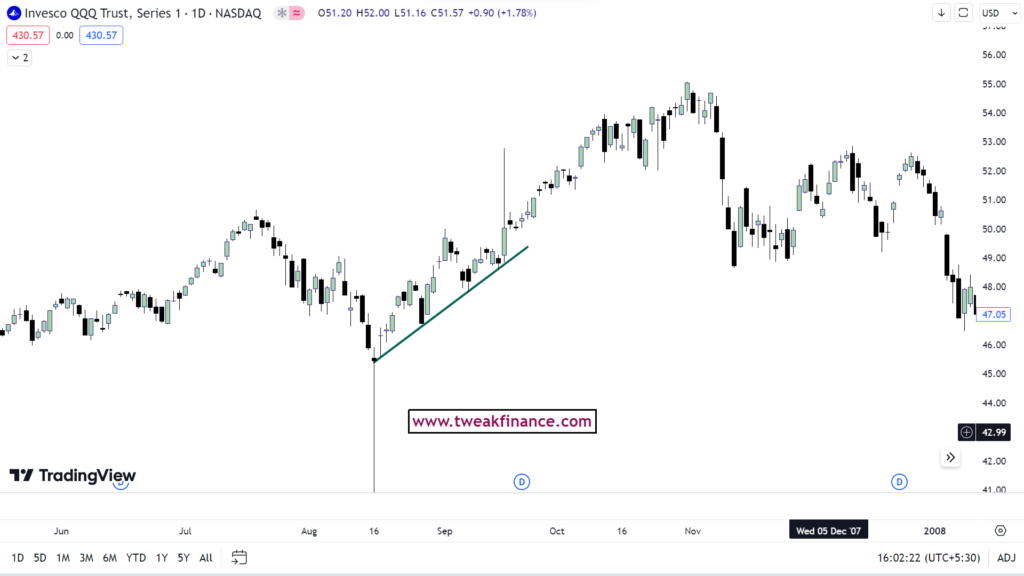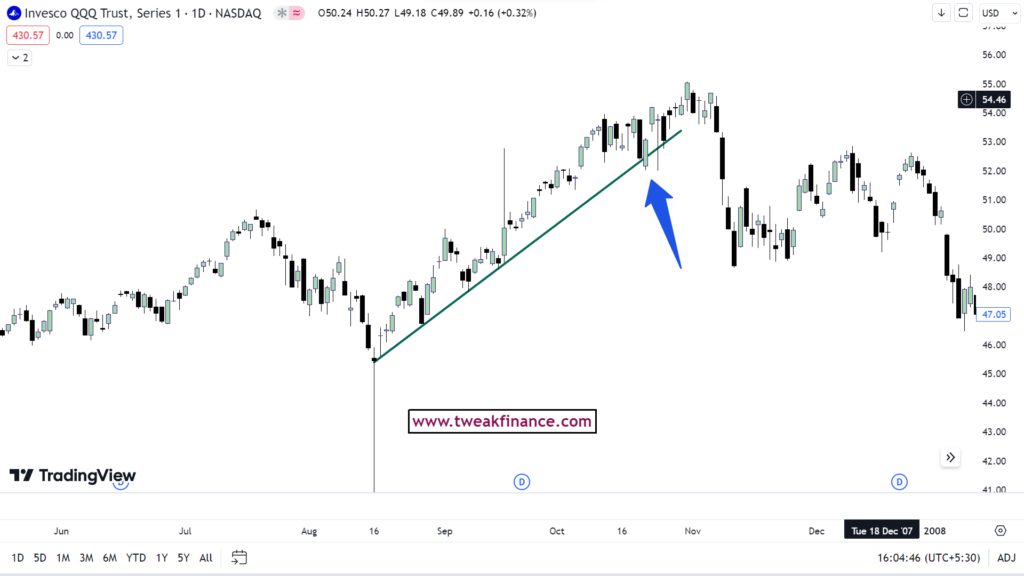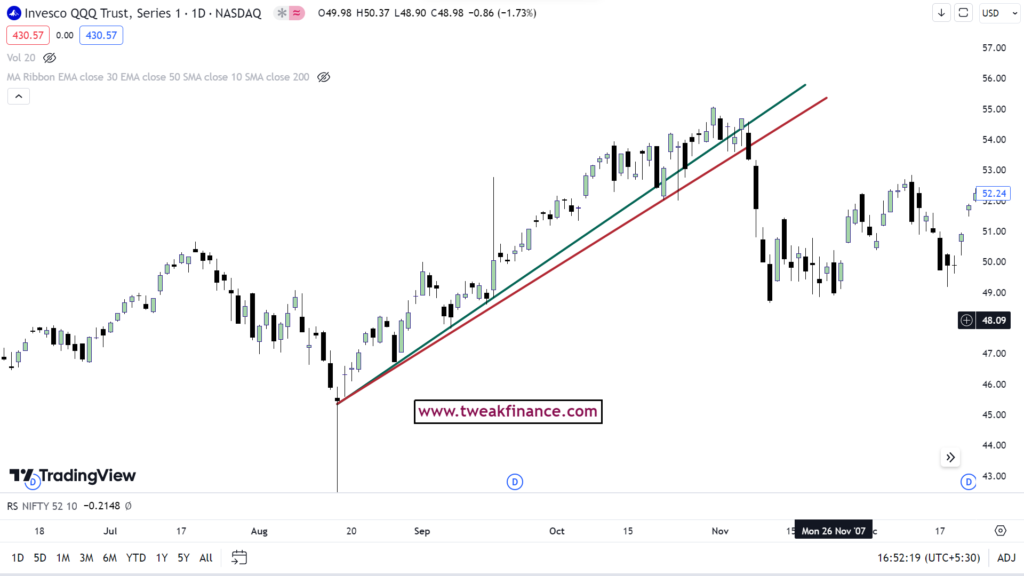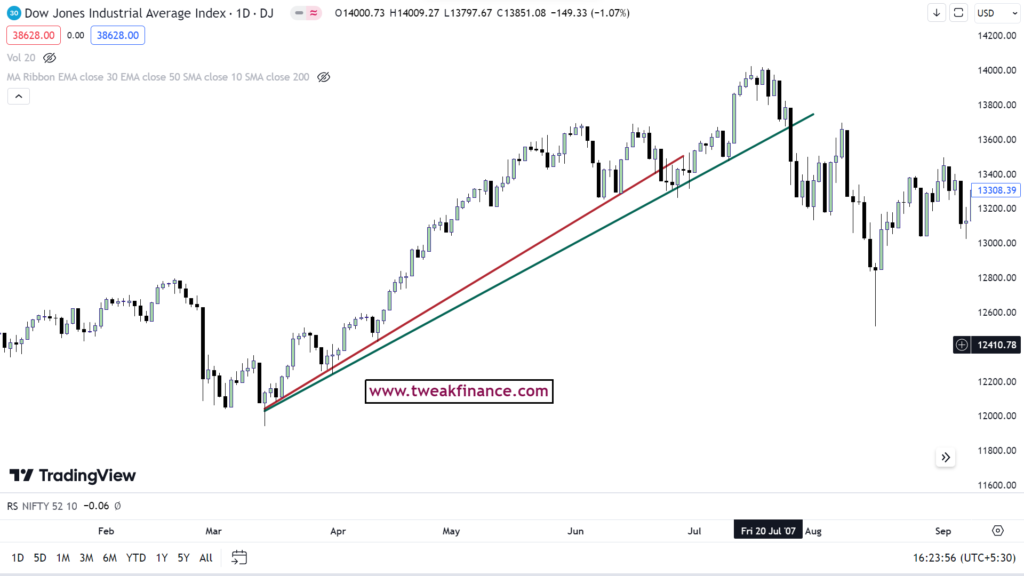Unlock the secrets of technical analysis with our comprehensive guide on “How to Draw Trend Lines.” Discover step-by-step instructions and expert tips to effectively identify trends and anticipate market movements.
Perfect for traders of all levels, this blog post will empower you with essential skills to draw trend lines like a pro and enhance your trading strategy. Don’t miss out on mastering this fundamental aspect of chart analysis!
Drawing trend lines can be a bit of an art form – it takes time to get the hang of it. Everyone seems to have their own way of doing it, and there’s no one “perfect” method that everyone agrees on!
What is the goal of drawing trend lines?
So, why bother drawing trend lines in the first place? Well, the main goal is to spot potential reversals or changes in trend direction.
In an uptrend, you draw the line along the lowest points in the trend without letting it cut through prices. You need at least two points of contact with the trend line to be valid.
Take a look at this chart:

See how the stock found support near the line after getting at least two touches? That would’ve been a good time to jump in.
But here’s the thing – the stock market isn’t always perfect. Sometimes, a stock will break the trend line but won’t actually change its trend. Just because the line is broken doesn’t mean the stock is about to tank!
You can see in this chart below of QQQ, that there was a trend line break but it did not result in a change of trend.

On this chart, you can also see how a stock can often run into resistance near a trend line, if it is broken (top of chart).
So what do I do if the stock breaks the trend line? You draw another one! Like this…
If that happens, you just draw another trend line, like this:

Sometimes, you’ll end up with several trend lines on one chart.

After the first trend line broke, we realized the trend wasn’t going to change, so we drew a new one. Then, we waited for the line to be touched again and looked for signs of a turnaround before making any new position.
Here are a few more Trend lines tips:
- The more times a stock touches a trend line, the more important it is.
- It takes two touches to draw a trend line, but you need three to confirm it.
- In a downtrend, draw the line along the highs of prices.
- Steep trend lines are less reliable.
- A break in the trend line doesn’t always mean the trend will change.
So, here’s the bottom line:
Trend lines are just one piece of the puzzle. After looking at tons of charts, you’ll start to spot trends without even drawing lines. And remember, never buy a stock just because it’s hitting a trend line – it’s just one factor to consider!
Have questions, suggestions, or topics you’d like us to cover? We’d love to hear from you! Please check About us.
Disclaimer:
The information provided in this finance blog is for general informational purposes only. It does not constitute financial advice, and readers are encouraged to consult with a qualified financial advisor for personalized guidance. The author is not liable for any financial decisions or actions based on this blog’s content. Investments involve risks, and past performance is not indicative of future results. Always conduct thorough research and consider your financial circumstances before making any investment decisions.

